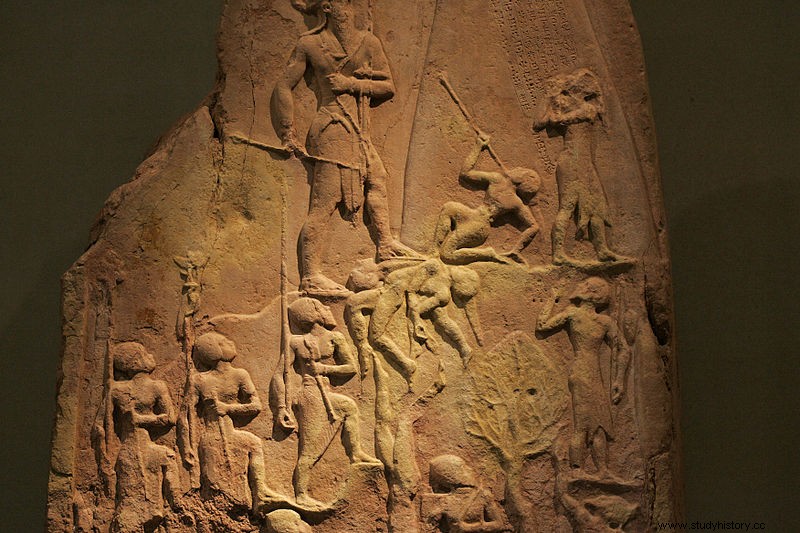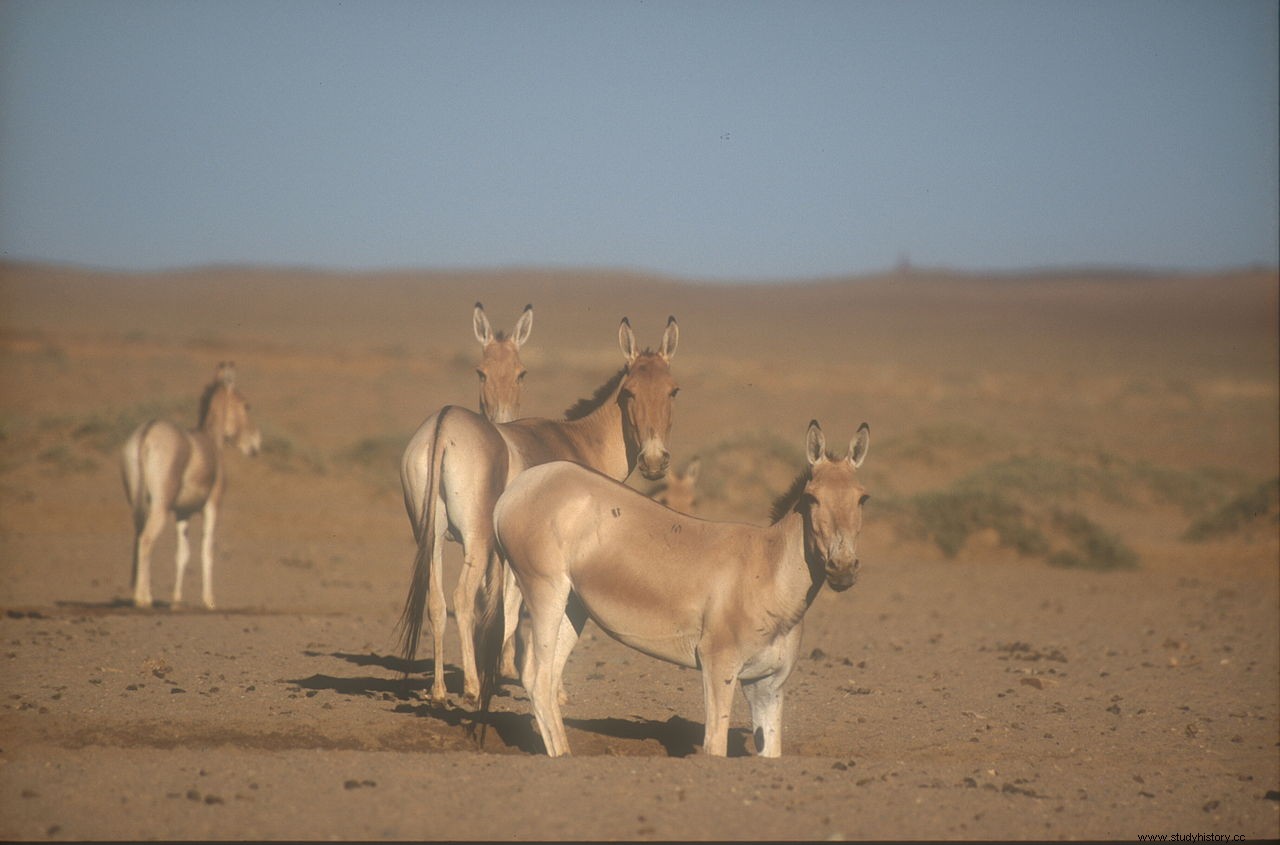Today we have more than enough archaeological evidence to be able to affirm that the human being has been massacring his neighbor since he came down from the trees and started throwing stones. We have found human remains from the Paleolithic riddled with arrows or stones, and even the famous Ötzi , the mummy of the Alps, looks like he got a deep tattoo of an arrowhead. One of the oldest testimonies where there is talk of a massacre, we have it in one of the stories referring to the Akkadian king Naram-Sin . When history was written, centuries after his reign, he was remembered as a great conqueror whose hand did not tremble when skinning a defeated foe alive. 
Naram Sin's Victory
According to this story, a strange town that is named in the tablets as “Umman-Manda ” was established in the northern plains between the sources of the Tigris and Euphrates rivers. We know little of that mysterious town. Its name appears for centuries, until the time of Cyrus the Great, and its use seems to refer to an army of invaders who laid waste to everything. Something like the legend of Attila and the Huns, to understand us. It is assumed that they consisted of several migrations of Indo-European origin, or so it seems from the names of leaders that have been preserved. It is also said that since the time of Naram-Sin they were already accompanied by large animals similar to onagers, which makes some researchers imagine them as originating either from Anatolia or rather from the Caspian, where by the Akkadian era they had already been domesticated the horse. The Akkadian name “Umman-Manda” can be translated as “Manda's army ” or “manda crowd ”. Let's be frank, it's a way like any other of saying:“that gang of squatters who come to take our bread without being invited ”.

Onagers
The Sumeroacadians did not see them as human beings. Although this seems very modern to us, one of the rules of genocide consists in denying the victim the nature of being human, as Jews, Armenians, Tutsis, Russians, Sioux, Koreans, Chinese, indigenous Australians, and all those who have ever suffered extermination. King Naram-Sin decided to stab some of them to see if they were deadly. As they bled to death, they were ruled missing. The fact of bleeding did not make them look like normal human beings, but simply that they could die. Shakespeare and his character Shylock , they would be somewhat perplexed by this opinion of the Akkadian (*). Naram-Sin's decision was not to leave even one. He had men, women and children killed without mercy. It should be noted that the Umman-Manda defended themselves like beasts, and even the women took up arms, but they could do little against the Akkadian bows. The king had the corpses piled up and burned without religious ceremonies, not considering them human. But some time later, another invasion of Umman-Manda came down from the north under the command of their king and, this time, they began to destroy cities. Naram-Sin was defeated trying to confront them, and came to the practical conclusion that it was best to let them have their way and let the gods take care of them.
Despite that terrible slaughter with which they were received, the Umman-Manda continued to reappear throughout the centuries, as we said at the beginning, being known by the Elamites , Assyrians , Babylonians and Hittites , and it is thought that over time they settled down and gave rise to the Medo Empire . Two ideas can be deduced from this:that things don't always go badly for the "squatters" and that the best way to end Attila is not to organize a massacre.
(*) If you prick us, don't we bleed? If you tickle us, don't we laugh? If you poison us, don't we die? And if you insult us, will we not take revenge?… – The Merchant of Venice.
Contributed by Joshua BedwyR author of In a Dark Blue World
